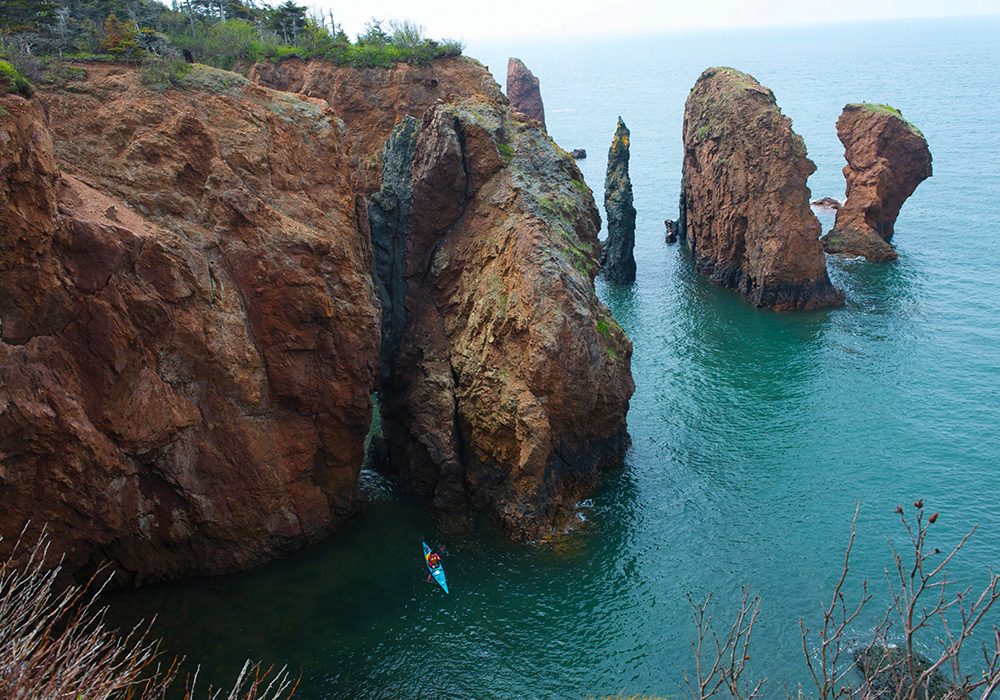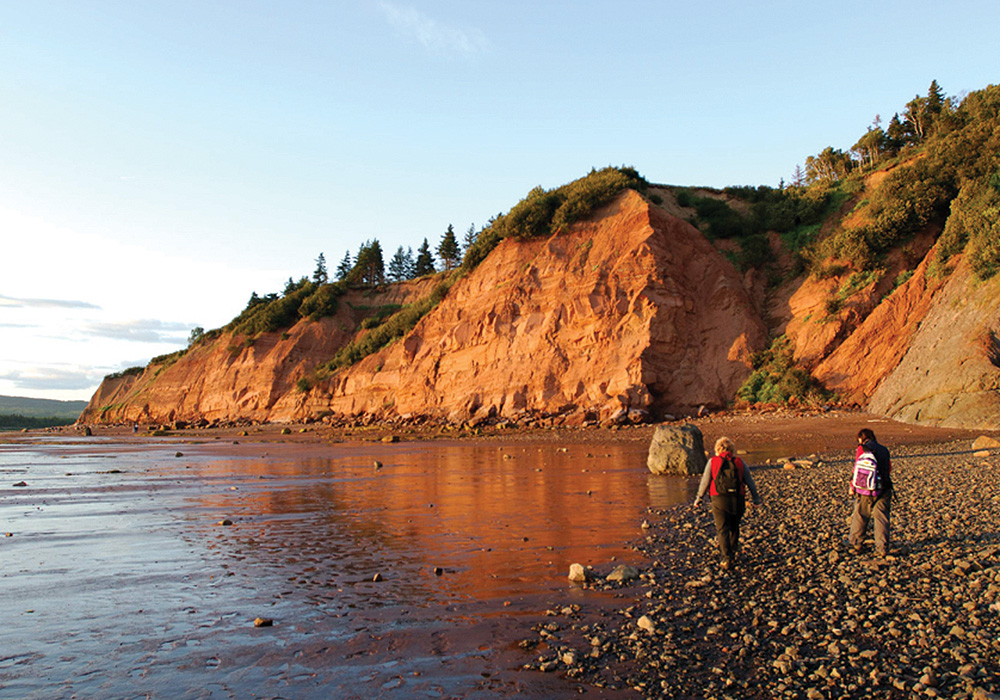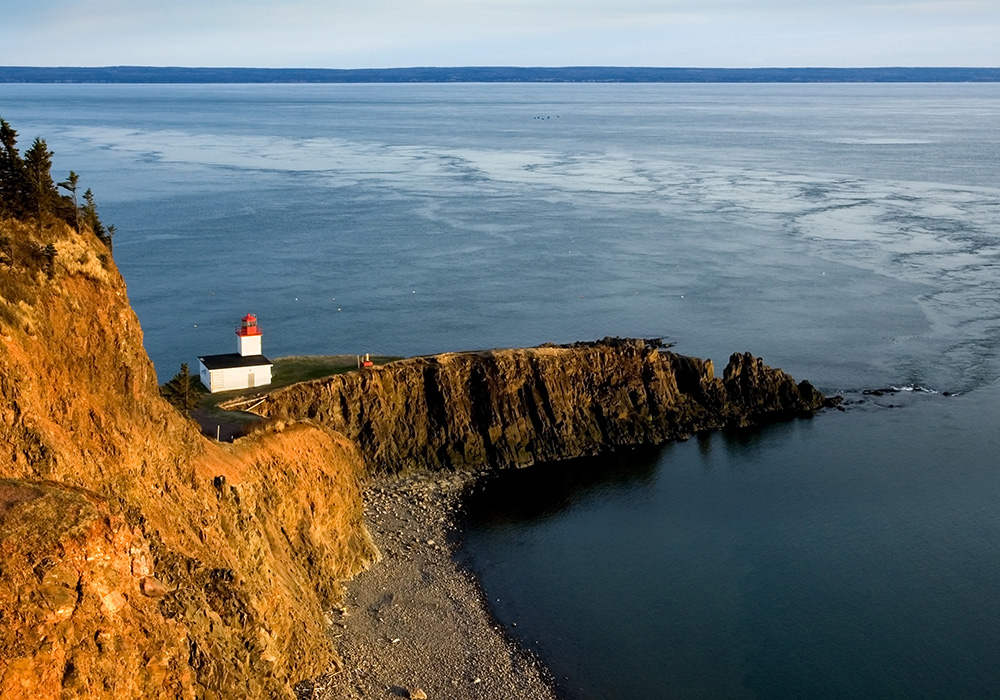
Bay of Fundy
May 1, 2022
The natural wonder of our world.

The Tide Is High. Very, Very High.
Natural wonder. Remarkable seascape. Magnificent tides. One hundred billion tonnes of water move in and out of the Bay of Fundy twice a day, every single day. The highest tides in the world, in fact. The result? Boundless opportunities to explore an extraordinary landscape, incredible marine life, and even the bottom of the ocean floor. And you can enjoy this natural phenomenon from both Nova Scotia and New Brunswick.

The Wonders of New Brunswick.
In New Brunswick, explore The Hopewell Rocks, where you can walk around the famous “flowerpot rocks” at low tide then watch as they slowly disappear with the rising tide. Bike, rappel, camp, or kayak your way around the bay. Go whale watching, explore the coast, or go off the beaten path to explore the geological formations, terrestrial and marine ecosystems of the UNESCO Fundy Biosphere Reserve.

Nova Scotia Tidal Adventures.
On the Nova Scotia side, steady erosion from the tides over millions of years have formed sea caves, rock formations, and cliffs. The Joggins Fossil Centre, a UNESCO World Natural Heritage Site, is where you’ll find the world’s largest collection of 300 million-year-old fossils. The nutrient-rich waters of the Bay of Fundy make it a feeding ground for marine life, and prime whale watching territory. Visit the Cape d’Or lighthouse perched at the point where the Minas Basin meets the Bay of Fundy, or spend an afternoon wriggling your toes in the tidal flats of Five Islands Park. Hiking the trails of Cape Chignecto Provincial Park is not only a spectacular adventure, it’s also where you’ll find the Three Sisters, one of Nova Scotia’s most famous rock formations, accessible only by boat or trail.

Explore the Maritimes
Whether you’re searching for a journey on the high seas or adventure on dry land, we have a little something for everyone. Explore Today